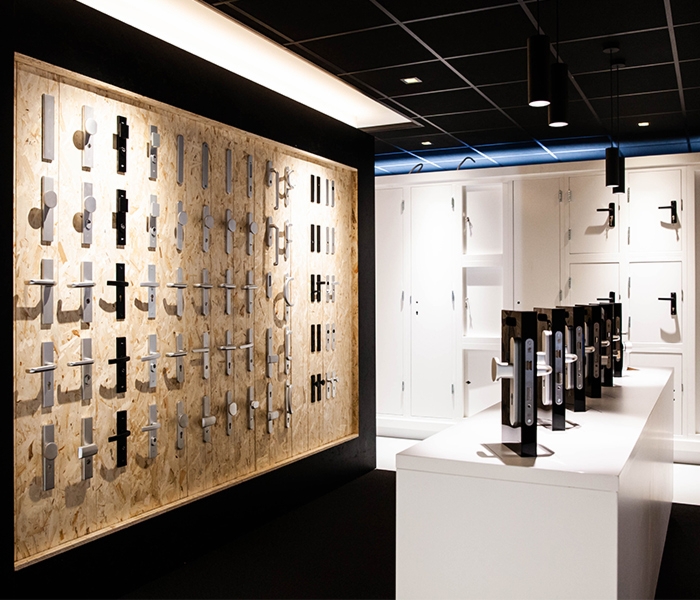Customer service

Customer service
Monday - Friday
8:30 AM - 5 PM
How can we help you?
The demand for the safe storage of, and consistent guidelines on, lithium batteries has grown with the increase in their use. There is currently little legislation and few rules in the Netherlands and so the organisation that manages the Publication Series on Hazardous Substances [Publicatiereeks Gevaarlijke Stoffen or PGS] is drawing up guidelines. These rules will apply to the storage of lithium-ion batteries by companies. It will take at least a year before these guidelines are available, so in the meantime, the regional security and safety regions [veiligheidsregio’s] Haaglanden and Rotterdam Rijnmond and the national information centre for accidents involving hazardous chemicals [Landelijk Informatiepunt Ongevallen Gevaarlijke Stoffen or LIOGS] have written a manual about the storage of these batteries.They will include the recommendation to store lithium batteries in a fire-resistant safety cabinet. We have developed the Sistec lithium-ion safe for this new problem, a fire and burglar resistant safe for storing these batteries safely. The safe offers the solution thanks to an automatic fire-suppression system and the European LFS30P standard (30 minute fire resistance). The safe is fitted with a foam extinguisher to put out lithium batteries (class EN 1568 and EN 3-7). The extinguisher is connected to a detection and an extinguisher hose, which automatically bursts open where the overheating is at a temperature of 75 C. The foam ensures prolonged cooling so that the battery cannot continue to burn. Lithium batteries are dangerous because they can be very unstable. Damage or a production defect can cause a chain reaction, also known as a ‘thermal runaway’, when the battery bursts into flames and can even explode. A lithium battery is made up of several cells. As soon as the first cells catch fire, the battery temperature quickly increases. The battery then has to be cooled down as quickly as possible to prevent a chain reaction. The safe’s double-walled construction also offers protection from burglars and fire outside of the safe. The safe is certified to the European LFS30P standard, which means that it is fire resistant for at least 30 minutes. With the increase in lithium-ion batteries, the demand for safe storage and consistent guidelines has also grown. Unfortunately, there is no EN standard yet for the storage of lithium ion batteries. At the end of 2021, it is expected that the standard PGS 37, which supplements the Publicatioin Series on Hazardous Substances, will be ready. A manual has already been made available by the Haaglanden and Rotterdam Rijnmond Safety Regions and LIOGS. Among other things, it recommends storing lithium batteries in a fire-resistant safety cabinet. To ensure the continuity of your business operations, it is important that you also protect the batteries against theft. Therefore, the SISTEC Lithium-ion safe also offers protection against burglary and a fire that originates outside the safe, thanks to a double-walled construction. The safe is European certified according to LFS30P and therefore 30 minutes fire resistant. With the increase in lithium-ion batteries, the demand for safe storage and consistent guidelines has also grown. Unfortunately, there is no EN standard yet for the storage of lithium ion batteries. At the end of 2021, it is expected that the standard PGS 37, which supplements the Publicatioin Series on Hazardous Substances, will be ready. A manual has already been made available by the Haaglanden and Rotterdam Rijnmond Safety Regions and LIOGS. Among other things, it recommends storing lithium batteries in a fire-resistant safety cabinet. To ensure the continuity of your business operations, it is important that you also protect the batteries against theft. Therefore, the SISTEC Lithium-ion safe also offers protection against burglary and a fire that originates outside the safe, thanks to a double-walled construction. The safe is European certified according to LFS30P and therefore 30 minutes fire resistant. The demand for the safe storage of, and consistent guidelines on, lithium batteries has grown with the increase in their use. There is currently little legislation and few rules in the Netherlands and so the organisation that manages the Publication Series on Hazardous Substances [Publicatiereeks Gevaarlijke Stoffen or PGS] is drawing up guidelines. These rules will apply to the storage of lithium-ion batteries by companies. It will take at least a year before these guidelines are available, so in the meantime, the regional security and safety regions [veiligheidsregio’s] Haaglanden and Rotterdam Rijnmond and the national information centre for accidents involving hazardous chemicals [Landelijk Informatiepunt Ongevallen Gevaarlijke Stoffen or LIOGS] have written a manual about the storage of these batteries.They will include the recommendation to store lithium batteries in a fire-resistant safety cabinet.
European certified
European certified lithium ion safe
- European certification by ECB-S Class S2 according to EN 14450 against burglary
- European certification by ECB-S class LFS30P according to EN 15659 against fire
A heavier fire resistant safe (LFS60P) is also possible.European certified lithium ion safe
- European certification by ECB-S Class S2 according to EN 14450 against burglary
- European certification by ECB-S class LFS30P according to EN 15659 against fire
A heavier fire resistant safe (LFS60P) is also possible.




 Safes
Safes  Service and support
Service and support Delivery and Returns
Delivery and Returns Order
Order My account
My account Payments
Payments